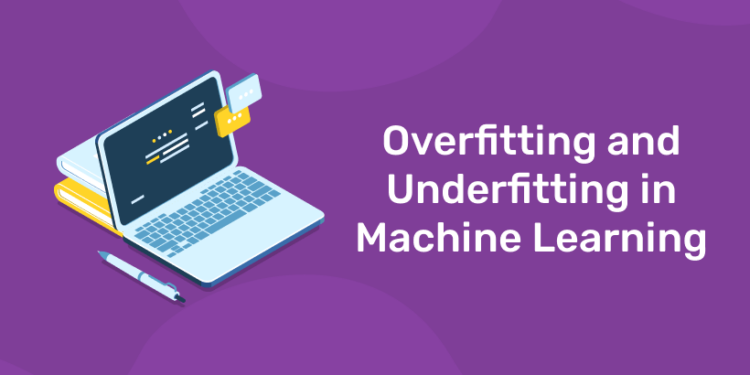Machine learning is a subset of artificial intelligence (AI) that deals with the extraction of patterns from data and then employing those patterns to allow algorithms to improve themselves over time. This type of learning can assist computers in recognizing patterns and associations in massive amounts of data and making predictions and forecasts based on their findings. A computer can be taught the game’s rules in such a way that it can adapt and respond to an infinite number of moves, including ones it has never seen before. Machine learning is rapidly evolving. Although some forms of machine learning have been around for hundreds of years, it is now at the forefront of technological innovation. It can now be used in almost any field or industry to consume massive amounts of data from an infinite number of sources and drive real business impact.
Get a free demo for our certificate program in data science and Machine learning
Humans may be intelligent, but we cannot frequently see clearly. We may want to know a lot about our business, but the patterns we need are hidden in dense data. Machine learning allows us to train a computer to look at the same data that we do and derive patterns and connections that we cannot see. This provides truly superhuman insight into the massive amount of data being generated today, fueling a revolution in nearly every industry. Machine learning is already making a significant difference in a variety of industries. Machine learning is being used in the financial services industry to analyze data for risk analytics, fraud detection, and portfolio management. In travel, GPS traffic predictions are used. It is also used to populate recommendations on Amazon and Netflix. The implications of this advancement are enormous.
Overfitting and Underfitting in Machine Learning
Overfitting and underfitting are two major issues in machine learning that degrade the performance of machine learning models. Each machine learning model’s main goal is to generalize well. In this context, generalization refers to an ML model’s ability to provide a suitable output by adapting the given set of unknown inputs. It means that after training on the dataset, it can produce reliable and accurate results. As a result, underfitting and overfitting are the two terms that must be checked for model performance and whether the model is generalizing well or not.
Let’s start with some basic terms that will help us understand this topic better:
- Signal: The term “signal” refers to the true underlying pattern of the data that allows the machine learning model to learn from it.
- Noise: Noise is unneeded and irrelevant data that degrade the model’s performance.
- Bias: A prediction error introduced in the model as a result of oversimplifying the machine learning algorithms. Alternatively, it is the difference between the predicted and actual values.
- Variance: Variance occurs when the machine learning model performs well with the training dataset but not well with the test dataset.
Are you aspiring for a booming career in IT? If YES, then dive in |
||
Full Stack Developer Course |
Python Programming Course |
Data Science and Machine Learning Course |
Overfitting in Machine Learning
Overfitting is a data science concept that occurs when a statistical model fits perfectly against its training data. When this occurs, the algorithm is unable to perform accurately against unseen data, effectively defeating its purpose. The ability to generalize a model to new data is ultimately what allows us to use machine learning algorithms to make predictions and classify data daily. When machine learning algorithms are built, a sample dataset is used to train the model. However, if the model trains on sample data for too long or becomes too complex, it may begin to learn the “noise,” or irrelevant information, within the dataset. The model becomes “overfitted” when it memorizes the noise and fits too closely to the training set, and it is unable to generalize well to new data. If a model is unable to generalize well to new data, it will be unable to perform the classification or prediction tasks for which it was designed.
Learn data science and machine learning course
Overfitting is indicated by low error rates and high variance. To avoid this kind of behavior, a portion of the training dataset is usually set aside as the “test set” to check for overfitting. When the training data has a low error rate and the test data has a high error rate, overfitting occurs. The main difficulty with overfitting is estimating the accuracy of our model’s performance with new data. We won’t be able to estimate the accuracy until we put it to the test. To address this issue, we can separate the initial data set into training and testing data sets. We can approximate how well our model will perform with the new data using this technique. Another method for detecting overfitting is, to begin with, a simple model that will serve as a benchmark. If you use this approach, you will be able to determine whether or not the additional complexity is worthwhile for the model. It is also referred to as Occam’s razor test.
Catalyst of Overfitting
Several catalysts for avoiding overfitting in Machine Learning are listed below.
- Cross Validation
Cross-validation is one of the most effective features for avoiding/preventing overfitting. The idea is to use the initial training data to generate mini train-test splits, which you can then use to tune your model. We can tune the hyperparameters using only the original training set thanks to cross-validation. The test set is kept separate as a true unseen data set for selecting the final model. As a result, avoid overfitting entirely.
- Removing Features
Although some algorithms select features automatically. We can manually remove a few irrelevant features from the input features for a significant number of those who do not have a built-in feature selection to improve generalization. One method is to conclude how a feature fits into the model. It’s very similar to debugging code line by line.
- Regularization
It means forcing your model to be simpler by employing a wider range of techniques. It is entirely dependent on the type of learner that we are employing. We can, for example, prune a decision tree, use a dropout on a neural network, or add a penalty parameter to a regression cost function.
- Training with more data
This technique may not work every time, as we saw in the previous example, where training with a large population helps the model. It essentially aids the model in better identifying the signal.
- Early Stopping
When the model is being trained, you can measure how well it performs with each iteration. We can keep doing this until the iterations improve the model’s performance. Following that, the model overfits the training data as generalization weakens with each iteration.
- Ensembling
This method essentially combines predictions from various Machine Learning models. Bagging and Boosting are two of the most common methods for ensembling. Bagging attempts to reduce the likelihood of overfitting the models, while Boosting attempts to improve the predictive flexibility of simpler models. Even though they are both ensemble methods, the approaches begin in opposite directions. Bagging employs complex base models and attempts to smooth out their predictions, whereas boosting employs simple base models and attempts to increase its aggregate complexity.
level up your career with data science & machine learning online course !
Underfitting in Machine Learning
Underfitting is a data science scenario in which a data model is unable to accurately capture the relationship between the input and output variables, resulting in a high error rate on both the training set and unseen data. It happens when a model is overly simple, which can happen when a model requires more training time, more input features, or less regularization. When a model is under-fitted, it cannot establish the dominant trend in the data, resulting in training errors and poor model performance. A model that does not generalize well to new data cannot be used for classification or prediction tasks. The ability to generalize a model to new data is ultimately what allows us to use machine learning algorithms to make predictions and classify data daily. Underfitting is indicated by high bias and low variance. Underfitted models are usually easier to identify than overfitted ones because this behavior can be observed while using the training dataset.
Learn data science and machine learning course with Entri app! Get a free demo
We can better assist in establishing the dominant relationship between the input and output variables at the start because we can detect underfitting based on the training set. We can avoid underfitting and make more accurate predictions by maintaining adequate model complexity. The following are some techniques for reducing underfitting:
- Feature Selection
Specific features of any model are used to determine a given outcome. If there aren’t enough predictive features, more features or features with higher importance should be added. In a neural network, for example, you could add more hidden neurons, while in a random forest, you could add more trees. This process will add complexity to the model, resulting in better training results.
- Decrease Regularization
Regularization is commonly used to reduce model variance by applying a penalty to the input parameters with the highest coefficients. There are several methods for reducing noise and outliers within a model, including L1 regularization, Lasso regularization, dropout, and others. If the data features become too uniform, the model will be unable to identify the dominant trend, resulting in underfitting. By reducing the amount of regularization, the model gains complexity and variation, allowing for successful model training.
- Increase the duration of Training
As previously stated, stopping training too soon can result in an underfit model. It can thus be avoided by extending the duration of training. However, it is critical to avoid overtraining and, as a result, overfitting. Finding a happy medium between the two scenarios will be critical.
Wrapping Up
Overfitting is the inverse of underfitting and occurs when the model has been overtrained or contains too much complexity, resulting in high error rates on test data. Overfitting a model is more common than underfitting one, and underfitting is typically done to avoid overfitting through a process known as “early stopping.”
Related Articles
| Our Other Courses | ||
| MEP Course | Quantity Surveying Course | Montessori Teachers Training Course |
| Performance Marketing Course | Practical Accounting Course | Yoga Teachers Training Course |










